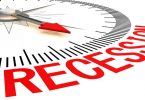Turns out mindfulness isn’t just for yogis — it can also help rein in your spending habits.
We’ve all heard about the dangers of high-interest loans and credit cards. But a high-interest loan in and of itself might not cost you that much if you pay off your balance in full when it’s due. The real danger is having to take out a new loan to pay off your old one and getting trapped in a cycle of debt.
The good news is there are some steps you can take to avoid this. Being mindful of your spending limits, reading your paperwork and keeping a close eye on your financial accounts can all make a big difference.
What is a cycle of debt?
A cycle of debt is when you continue borrowing rather than paying off a loan or credit card. This causes interest to add up and makes it increasingly difficult to pay off your balance.
In the worst cases, you might have to apply for debt relief or even bankruptcy, which seriously damages your credit score and can make it difficult to rent an apartment or find a new job. If you have a title loan, you could also lose your car. And if you have your repayments on autopay, your bank could close your account after too many insufficient funds transactions.
How can I get caught in a cycle of debt?
With a credit card, the main way you can get caught in a cycle of debt is by only making the minimum monthly payment, rather than paying off your balance. And with a loan, you can get caught by refinancing or rolling over your loan each time it’s due.
However, there are ways to avoid this debt cycle and set yourself up for financial freedom.
1. Be aware of your spending limits.
The first step toward avoiding a cycle of debt is knowing what you’re working with. If you don’t already, tally up your monthly income and regular expenses and keep those numbers in mind before you spend. Don’t want to do the work? Download a budgeting app and let the machines do it for you.
If your income is less than your expenses, you’re not alone — most Americans need an extra job to break even. But you’re also at risk of getting trapped in a cycle of debt should an emergency come up. Brainstorm ways to cut back so you don’t have to continually borrow or rely on your credit card. When you just can’t cut back, consider taking on a side gig.
2. Spend mindfully.
Mindfulness means being present and aware of your actions. The word might conjure up images of clean-eating influencers and meditation retreats. But it’s really important when it comes to checking in on our spending habits.
Impulse purchases have never been easier, thanks to the world of online stores at our fingertips. Just a few weeks ago, I was scrolling through Instagram, saw a jacket I liked and before I even processed what I was doing, ordered a look-alike on Amazon. When it came in the mail, I didn’t even really want it.
One trick to avoiding mindless shopping is waiting before you buy something. By all means, load up your cart. But wait at least 24 hours before you actually check out. During that time, think about whether that purchase fits into your budget and will be a positive addition to your life. More often than not, I end up emptying my cart.
Going to a store? Arm yourself with a shopping list. If that kills the joy of shopping, go with a spending limit and be mindful of each item you put in your basket.
3. Pay off your credit card balance in full each month.
If you look at your credit card statement, chances are it asks for a minimum monthly payment that’s much lower than your balance. But only making that minimum payment can get you caught in a cycle of debt.
That’s because each month you fail to pay off your balance in full, interest starts to add up. And with most credit card APRs hovering between 18% and 30%, you could end up on the hook for much more than you spent and a credit card bill you can’t afford.
Instead of making the minimum payment, look at your monthly balance and aim to pay that off instead. Or try to go one step further and pay off your purchases as soon as they go through. I personally like doing this, since those numbers are a lot less daunting and it helps me catch myself when I’m overspending.
4. Only borrow what you can afford to repay.
Depending on your state’s laws, your lender might be required to check your finances to make sure you have enough regular cash flow to afford repayments.
But even if your state doesn’t have this requirement or you’re using a credit card, making sure you’re able to afford repayments is key to avoiding a cycle of debt. After all, the cycle starts when you extend your first repayment or let your balance roll over into the next month.
You might already know how much you’re able to borrow if you’re in the habit of keeping track of your budget. If not, you can use our borrowing power calculator to help you crunch the numbers.
5. Set up an emergency fund.
Emergency expenses are a common way to get stuck in a cycle of debt, especially if you’re living paycheck to paycheck. Experts recommend that you have between three and six months of your monthly expenses saved up — though finance guru Suze Orman says at least 12 months is a must. But putting aside even a little money each month into a savings account can help reduce the amount you need to borrow if your car breaks down, your home gets damaged or another expense pops up.
Years ago, I got stopped at the border trying to leave a foreign country after I (very stupidly) overstayed my visa. I missed my $800 flight and wasn’t eligible for a refund, since I didn’t cancel in time. I was a student at the time, and were it not for my emergency fund, I wouldn’t have been able to afford a new flight home without going into debt.
To get the most out of your emergency fund, look into high-interest savings accounts. Some can go as high as 2.45% APY, meaning you’ll earn back 2.45% of the money you put in each year.
6. Build your credit.
Having a low credit score can seriously limit your options when you’re looking for a loan, sometimes leaving you with high-risk short-term loans as your only choice. Building your credit score before you need to borrow also gets you in the habit of thinking about your financial health — key to avoiding a cycle of debt.
If you’re just getting started or have a bad credit score, you might want to look into taking out a credit-builder loan. These are small-dollar short-term loans often offered by credit unions and small banks, which the lender reports to the credit bureaus. Often, the funds go into a savings account that you have no access to until you’ve finished paying off the loan.
Already got credit? Consider taking out a credit card to help your credit utilization ratio — the amount of credit you have access to versus the amount of debt you have. If you’d rather avoid them, there are several other ways to build your credit without using a credit card.
7. Think before you renew.
Refinancing, rolling over or renewing a loan are particularly dangerous when it comes single-payment short-term loans like payday or title loans. Typically, this involves paying a fee to push your loan’s due date back another two weeks or a month. It’s one of the easiest way to get trapped in a cycle of debt, so avoid renewing unless you have no other options.
Rolling over is what really makes short-term loans so expensive
Short-term loans often come with APRs in the triple digits due to the high fee you pay each time you borrow — often around $15 to $30 per $100 borrowed. If you’re able to repay the loan on time — typically within two to four weeks — then all you have to pay is that one-time fee. However, take a year to pay back your loan and those fees add up — leading to APRs upwards of 300%.
The majority of people who take out short-term loans renew it at least once, according to the Consumer Financial Protection Bureau (CFPB), letting those fees accumulate. Many actually end up paying more in fees than they originally borrowed. Because of this, consider one of these payday loan alternatives before you renew. And if you have consistent cashflow problems, look to see if you’re eligible for government benefits.
8. Stay away from balloon payments.
A balloon payment is a large one-time repayment at the end of a loan — popular on car loans, mortgages and some types of short-term loans.
While they can be tempting because they significantly lower your monthly repayments, they have two major drawbacks: You pay more in interest, and you could have trouble affording the balloon payment if you don’t save up.
Many borrowers who can’t afford the balloon payment refinance it into another loan — leading to even more interest and fees to add up. And if that loan comes with another balloon payment, you’re setting yourself up for a never-ending journey into more debt.
9. Weigh all of your options before you borrow.
This means doing a little investigating before you take on more debt. Know what you’re getting into, and read up on how it compares to alternatives out there. One easy way to do this is to take a few minutes to Google the type of financing you need + alternatives.
If you have bad credit and need money right away, you might think a payday loan is your only option. But if you can wait a day or two, you might be able to find financing with much better deals. Local banks and credit unions often offer low-interest short-term loans to all credit types. And you might not even need to be employed to qualify.
10. Read the terms and conditions before you sign on.
Knowing the terms of your loan or credit card is key to avoiding additional fees or accidentally allowing interest to add up. Go over your contract before signing off on a loan or using your credit card. Pay special attention to how payments and late fees work, and when your payments are due.
When you go to pay off a short-term loan, read the fine print first. Sometimes borrowers think they’re making a full repayment when they’re actually renewing the loan. This could continue for months before you realize what’s going on.
11. Keep track of your accounts.
You’re more likely to catch mistakes like a misapplied repayment if you keep tabs on your credit card and loan accounts. It can also help you remember what your balance is, how long you have to pay off a loan or how much you need to budget for your credit card payment.
One easy way to monitor your account is to download the company’s app on your phone. This makes it easy to go over your balance whenever you have a few minutes to spare, like when you’re waiting in line for lunch or sitting on the train. The more often you check in, the more likely you are to spot any mistakes.
Bottom line
Sometimes taking out a short-term loan or overloading your credit card is unavoidable. But getting sucked into debt doesn’t have to happen if you borrow only what you need, read the fine print and research all of your options before pulling the trigger. And taking steps to stay on top of your finances can help prepare you for those unexpected situations that crop up.
If you’re considering short-term financing, you might want to check out our guide to payday loans. We break down how they work, where they’re legal and what to expect.
This article originally appeared on finder.com.








